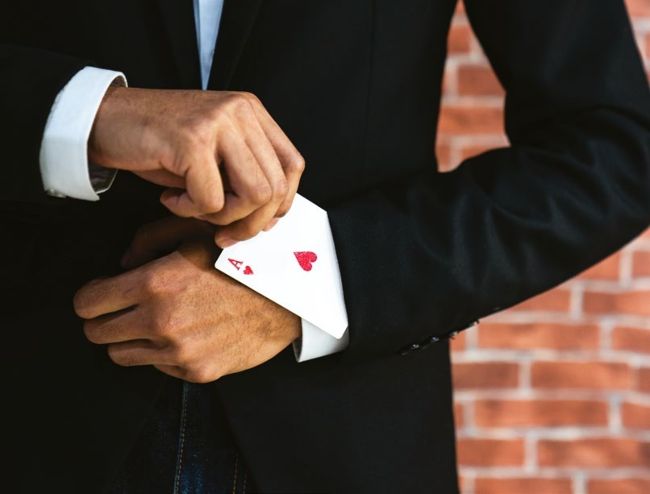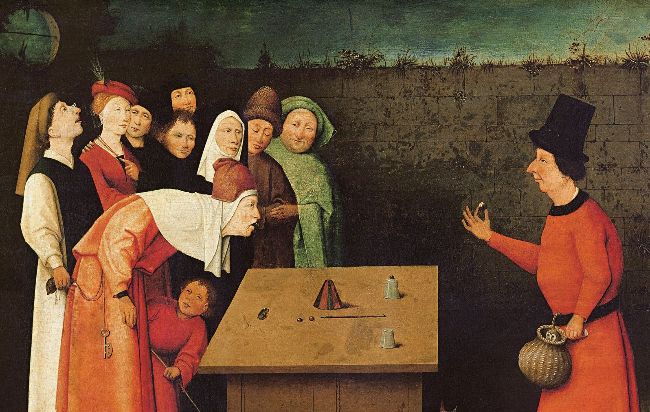HOW MAGICIANS PERFORM TRICKS
Breaking the spell to reveal the workings behind some of the greatest illusions in history
WORDS NIKOLE ROBINSON
E
ven the simplest magic tricks enthral and bewilder audiences
the world over, but it’s difficult to pinpoint exactly when emulating
the supernatural became a form of entertainment. Ancient Egyptian writings tell of the magician Djedi, who could reattach the severed heads of animals and bring them back to life. But even though this feat can be replicated today, there is still doubt cast on this story. There’s evidence that sleight-ofhand skills were performed in ancient Rome, most notably at banquets, but after
this era magic as a form of entertainment seems to have become heavily intertwined with the occult.

Sleeves and pockets are used to cleverly conceal objects
DID YOU KNOW?
David Copperfield made the Statue of Liberty disappear in 1983

This 1502 oil painting by Hieronymus Bosch depicts an early cups and balls trick
By the Middle Ages, people had begun to fear magic, believing it to be the work of witches and the devil. To dispel this association and stop innocents from being persecuted and burnt at the stake, Reginald Scot published his book, The Discoverie of Witchcraft, in 1584. It is considered the first text written about performance magic. Within it, he described the methods behind many magic tricks, distancing them from witchcraft and the paranormal by revealing their secrets and deceptions. Travelling performers and street magicians would continue to perfect the craft, developing new techniques and apparatus to improve upon well-known illusions while also coming up with new ideas.